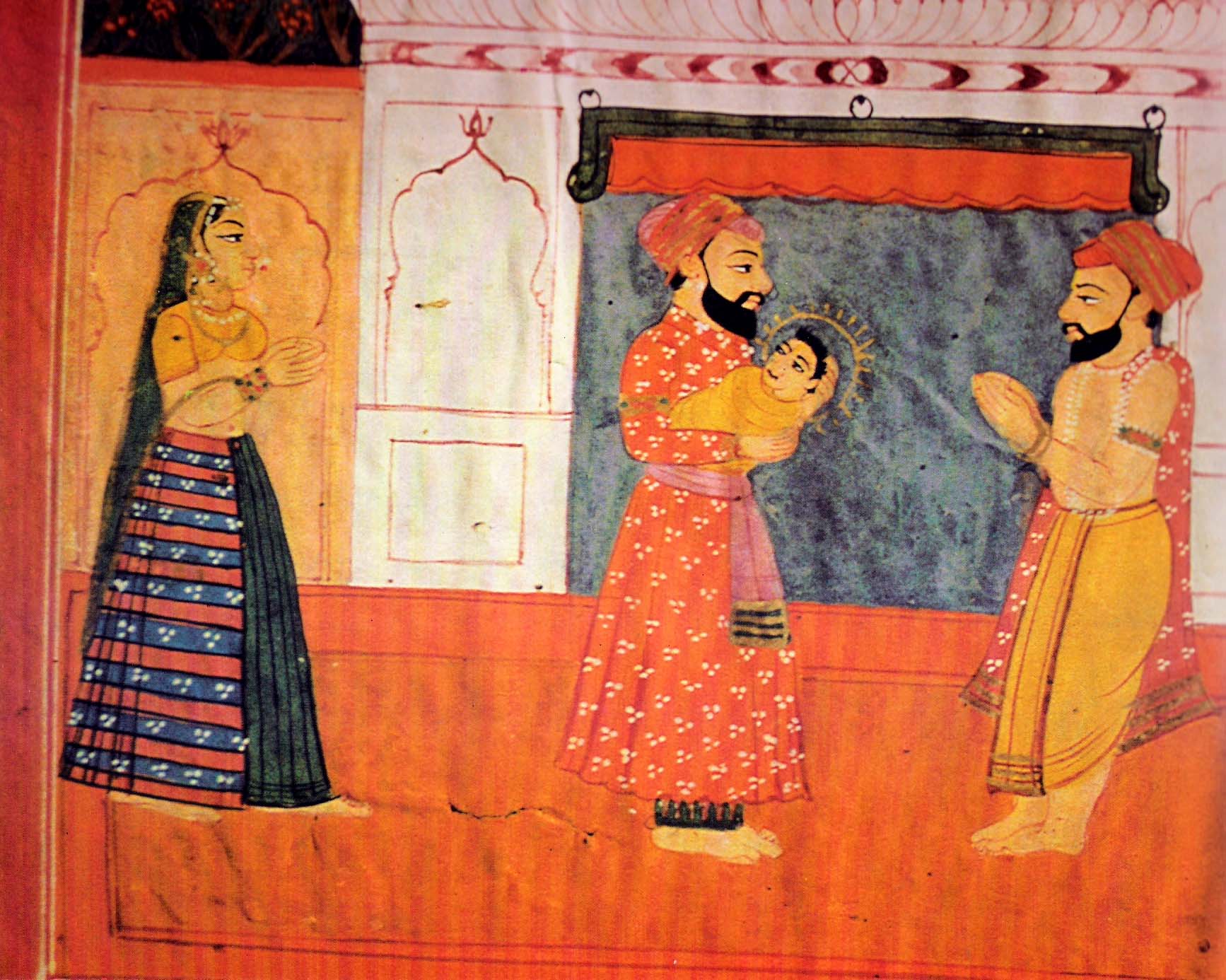The Birth of the Guru
Guru Nanak, the founder of the Sikh religion, was born, according to all ancient Sikh records, in the early morning of the third day of the light half of the month of Baisakh (April-May) in the year A.D. 1469; but for convenience sake his anniversary is now observed by the Sikhs on the occasion of the full moon in the month of Kartik (October-November). His father, who was called Kalu, was accountant in the village of Talwandi in the present Lahore District of the Panjab, and his mother was Tripta, memorable in Sikh writings for her devotion to her son.
The Sikh biographers recount in minute detail all the circumstances of the birth of Guru Nanak. Daulatan, a midwife, assisted on the occasion. When next morning interrogated by the astrologer Hardial, who came to write the child's horoscope, as to the nature of the voice uttered by him at birth, she said it was as the laughing voice of a wise man joining a social gathering; and she expressed herself at her wits' end to comprehend the child's nature. The astrologer desired to see him, but his mother refused owing to the chillness of the weather. He pressed the matter, and the child was brought to him in his swaddling clothes. The astrologer on seeing the infant is said to have worshipped him with clasped hands. He declared the child should wear the umbrella, the symbol of regal or prophetic dignity in the East. At the same time he regretted that he should never live to see young Nanak's eminence, worshipped as he should be alike by Hindus and Musalmans, and not merely by Hindus as in the previous human manifestations of the Creator. The child's name should resound both in earth and heaven. Inanimate nature should cry out 'Nanak, Nanak!' He should have power over matter so as to traverse unscathed the depths of the ocean. He should worship and acknowledge but one God, and the creature he should treat as a creature. In other words he should be a monotheist, not a worshipper of minor deities and idols.
At the unripe age of five years Nanak is said to have begun to talk of divine subjects, and to have fully understood the meaning of his language. Great trust was reposed in him; and both Hindus and Musalmans lavished on him. their characteristic language of religious adulation.
Bhai Gurdas Ji's Vars:
The benefactor Lord listened to the cries (of humanity) and sent Guru Nanak to this world.
He washed His feet, eulogised God and got his Disciples drink the ambrosia of his feet.
He preached in this darkage (kaliyug) that, saragun (Brahm) and nirgun (Parbrahm) are the same and identical.
Dharma was now established on its four feet and all the four castes (through fraternal feeling) were converted into one caste (of humanity).
Equating the poor with the prince, he spread the etiquette of humbly touching the feet.
Inverse is the game of the beloved; he got the egotist high heads bowed to feet.
Baba Nanak rescued this dark age (kaliyug) and recited ‘satinam’ mantr for one and all.
Guru Nanak came to redeem the kaliyug.
With the emergence of the true Guru Nanak, the mist cleared and the light scattered all around.
As if at the sun rise the stars disappeared and the darkness dispelled.
With the roar of the lion in the forest the flocks of escaping deer now cannot have endurance.
Wherever Baba put his feet, a religious place was erected and established.
All the siddh-places now have been renamed on the name of Nanak.
Everyhome has become a place of dharma where singing.
Baba liberated all four directions and nine divisions of earth.
Gurmukh (Guru Nanak) has emerged in this kaliyug, the dark age.
References
- Macauliffe, M.A (1909). The Sikh Religion: Its Gurus Sacred Writings and Authors. Low Price Publications. ISBN 8175361328.
- Singh, Patwant (1989). The Golden Temple. ET Publishing Ltd. ISBN 9627375012.

